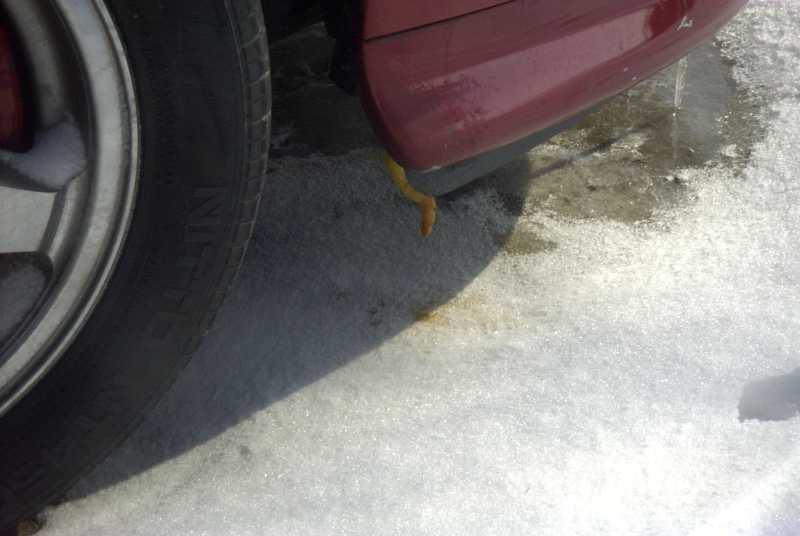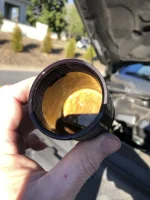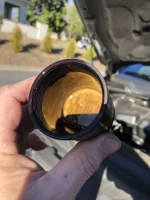My point is that I'd suspect your UOA of the crank case oil will also show the boron b/c you never get all of the old oil out, I don't believe this is evidence of "cleaning".1st HPL UOA may happen within the week. Have to get a sample from my Stahlbus valve and drop it at Blackstone.
You are using an out of date browser. It may not display this or other websites correctly.
You should upgrade or use an alternative browser.
You should upgrade or use an alternative browser.
Catch can sample testing results & analysis! What's really in your PCV system?
- Thread starter SubieRubyRoo
- Start date
SubieRubyRoo
Thread starter
It’s definitely possible since this is my first run. But if it’s there in the UOA after the 2nd or 3rd UOA, it should be in such small quantities as to be noise.My point is that I'd suspect your UOA of the crank case oil will also show the boron b/c you never get all of the old oil out, I don't believe this is evidence of "cleaning".
The curious thing is that even with residual oil, the amount left, after diluted with 6 quarts of HPL, should not be anywhere near 58ppm… that’s why I’m saying there is likely some removal of deposits.
What oil was in there last time? What is the VOA concentration of B in that oil?It’s definitely possible since this is my first run. But if it’s there in the UOA after the 2nd or 3rd UOA, it should be in such small quantities as to be noise.
The curious thing is that even with residual oil, the amount left, after diluted with 6 quarts of HPL, should not be anywhere near 58ppm… that’s why I’m saying there is likely some removal of deposits.
SubieRubyRoo
Thread starter
There was a short (2k mi) run of Pennzoil Euro 0w40… while I haven’t had a VOA done on that, a prior UOA on my Odyssey at 7.6k had 45ppm boron. Ravenol DXG prior to that had only 5ppm in a VOA, so…What oil was in there last time? What is the VOA concentration of B in that oil?
I assume the “distillation” effect that @MolaKule described is why I’m seeing the concentration of B. The UOA will be a better indicator of how much is actually left in the sump.
A little milky but not badHere’s a photo of my catch can after 15k miles
SubieRubyRoo
Thread starter
Just emptied my catch can after another ~1700 miles, this mileage with 2 tanks of E30 mix just because pump E85 was over $1/gal cheaper. Should have taken pic, will update later- E85 obviously and predictably increases moisture in the crankcase, as this nearly half-length sample from the previous one produced the same amount of catch can trappings. However, it seems this has much less oil and much more water, just a few emulsified blobs of oil.
Cleaned the catch can, removed the Fram Ultra 10575, grabbed a particle count test sample, and replaced it with a shiny new Fram Endurance, and topped up the HPL PCEO 5w30. Should have “after” PC sample, catch can trappings, a ~12k UOA, and C&P’d XG10575 and FE10575 in about 2 weeks!
Cleaned the catch can, removed the Fram Ultra 10575, grabbed a particle count test sample, and replaced it with a shiny new Fram Endurance, and topped up the HPL PCEO 5w30. Should have “after” PC sample, catch can trappings, a ~12k UOA, and C&P’d XG10575 and FE10575 in about 2 weeks!
Remember the what comes through a PCV walve is combustion by products vaporized oil and oil mist. Decades ago I tried valve covers that vented to the atmosphere in my boat engine and the blow by looked the same as what came from the road draft tubes before there was pcv required. So it is blow by products , water, gas, carbon and evaporated oil and mostly oil mist . The engines crancase and valve area is misted by the chruned up oil [ I can't think of a better description for the churned up oil mist, oil fog?]. Thanks for the uoa it is very interesting.
- Joined
- May 24, 2023
- Messages
- 130
Btw, the formation of oil mist is quite a thought-provoking topic. It's not solely about the quantity of isoparaffins in base oils - the influence of polymers on this process adds an additional layer of complexity. Exploring how polymers contribute to preventing mist formation and as polymers affecting droplets is a challenging endeavor. Interestingly, certain polymers with inadequate shear stability (high SSI) but high thickening capability due to their molecular weight can exhibit distinctive rheological (a bit viscoelastic) properties that prevent misting.Decades ago I tried valve covers that vented to the atmosphere in my boat engine and the blow by looked the same as what came from the road draft tubes before there was pcv required. So it is blow by products , water, gas, carbon and evaporated oil and mostly oil mist . The engines crancase and valve area is misted by the chruned up oil [ I can't think of a better description for the churned up oil mist, oil fog?]. Thanks for the uoa it is very interesting.
If we compare Mobil 1 esp X2 0W-20, which contains a highly shear stable polymer with a lower SSI, to some more cost-effective ILSAC 0W-20 oils containing more naphthenes / less shear stable polymers, we might observe notable differences in misting formation. Not to mention, the viscoelastic properties are likely to vary as well.
SubieRubyRoo
Thread starter
I’m not a card-carrying tree hugger by any means, but that seems pretty environmentally irresponsible. Zero stars.I had a home made self draining one on my Taurus SHO. It had a vacuum check valve that was closed as long as the engine had vacuum. So it drained itself when the engine was off.

Never left a stain on the concrete.I’m not a card-carrying tree hugger by any means, but that seems pretty environmentally irresponsible. Zero stars.
SubieRubyRoo
Thread starter
The photo you showed literally has oil on concrete.
Very observant. You will also see snow and it is just above freezing, hence the catch can thawing and dripping. With a couple hours sun that oil will evaporate. As it isn't mostly oil but water and gas.The photo you showed literally has oil on concrete.
SubieRubyRoo
Thread starter
Convince yourself however you want; I doubt you’ll find any other board member or sponsor condoning your methods. Let me be the first to congratulate you for contaminating soil and groundwater everywhere you’ve shut your car off.Very observant. You will also see snow and it is just above freezing, hence the catch can thawing and dripping. With a couple hours sun that oil will evaporate. As it isn't mostly oil but water and gas.
Plus, what’s the use in getting rid of the collection before you get to see what’s turned up in the PCV system? You still have zero data on if your engine is consuming oil, or passing it into the PCV. Seems less than optimal every way you can reasonably look at it.
Similar threads
- Replies
- 12
- Views
- 762
- Replies
- 8
- Views
- 248
- Replies
- 23
- Views
- 2K




